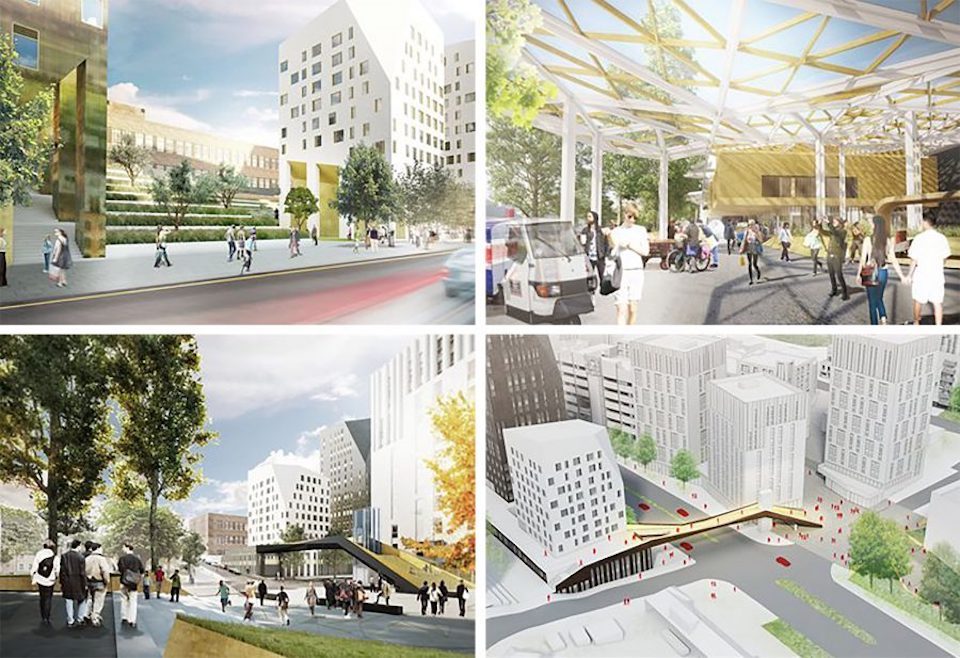April 2017
The Regency Society has made the following comments on application BH2017/00492 submitted by the University of Brighton in March 2017 for full planning permission for the redevelopment of Preston Barracks and Mithras House Car Park and outline planning permission for redevelopment of the Watts Building Car Park.
Although the proposals are disappointing in some respects, the Society is minded to support them for the following reasons:
- the site has been a derelict eyesore for far too long,
- we welcome the consolidation and expansion of the University of Brighton
- new student housing is sorely needed and will take pressure off conventional housing in the area
- we support the reinforcement of the academic corridor linking the Steine to Falmer
- the development will contribute positively to the economy of the City.
- we have no objection on conservation grounds - the site does not fall within a conservation area and the proposals will not affect any of the City’s heritage assets. (We understand that the surviving Regency Period barracks fall outside of the site boundaries and will remain the property of the M.o.D.)
- Even as they stand the proposals will considerably improve what has become a depressing urban corridor.
- We do not have a problem with the proposed heights of the buildings. The site lies in the bottom of a valley and falls within an area that has been ear-marked for tall buildings (SPGBH15 of 2004). Inevitably the development will be visible from other parts of the City and from various points on the Downs, though we don’t consider that this will necessarily pose a problem. Indeed it could add a point of interest to the City’s profile and act as a marker for the ‘academic corridor’.
We applaud the proposals for a system of routes that link the various teaching and research buildings and connect the Mithras campus to the Watts/Cockroft campus and ultimately to Moulsecoomb railway station. The insertion of small landscaped piazzas along the routes is particularly to be welcomed as is the construction of a footbridge across Lewes Road. The initial designs for the Management School with its cavernous entrance and its canopied loggia are intriguing.
The proposals have been criticized by others for their potential to increase traffic on Lewes Road. We note however, that the number of parking places has not increased significantly and that provision of student housing on the site will reduce the number of student journeys.
We have a number of concerns, but we hope that, with the encouragement of the Planning Committee, these can be resolved by the developer as the design develops :
- The drawings submitted are all to a very small scale and provide only scant detail of materials. It is not possible to evaluate the true appearance of the buildings. If permission is granted it should be made conditional upon the timely submission and approval of more detailed drawings.
- Some of the three-dimensional drawings (perspectives etc.) in the submission are misleading – they distort the relationship between vertical and horizontal dimensions, widening out the spaces between buildings and shrinking their height. These should be corrected and resubmitted or withdrawn.
- The external corridor referred to as ‘The Furlong’ runs between two lines of tall buildings. It will be in shadow for much of the day and will act as a wind tunnel. We believe that the environment would be improved if one block could be omitted in order to create an open space and allow more sun-penetration.
- The two sides of the development have been designed by different architects and therefore lack any sense of unity. That to the East, the Mithras Parcel, consist of five square blocks that are organised in an orthogonal fashion and relate well to the north-south axis of Lewes Road. They have simple forms that are enlivened by the chamfering of corners. That to the West, the Preston Barracks Parcel, consists of buildings that are canted at odd angles and exhibit arbitrary changes of material and detail. The layout exhibits a contrived casualness and the elevational treatment lacks consistency or authenticity. We urge the developer to bring more unity to the two parcels and to reduce arbitrariness of the elevational treatment on the west side.
- We welcome the provision of the foot and cycle bridge across Lewes Road but are concerned that the lines of tall building will act as a wind tunnel and subject bridge users to high winds and driving rain. We recommend the provision of some form of protective screen and canopy to the south side of the bridge.
- We believe that a group of buildings of such a size and significance should become a valued part of the City’s built heritage. Unfortunately the present proposals lack the necessary gravitas or urban presence to convince us that this will be the case. We hope that, as the design progresses, it will develop increased refinement and sophistication.
Text by David Robson

